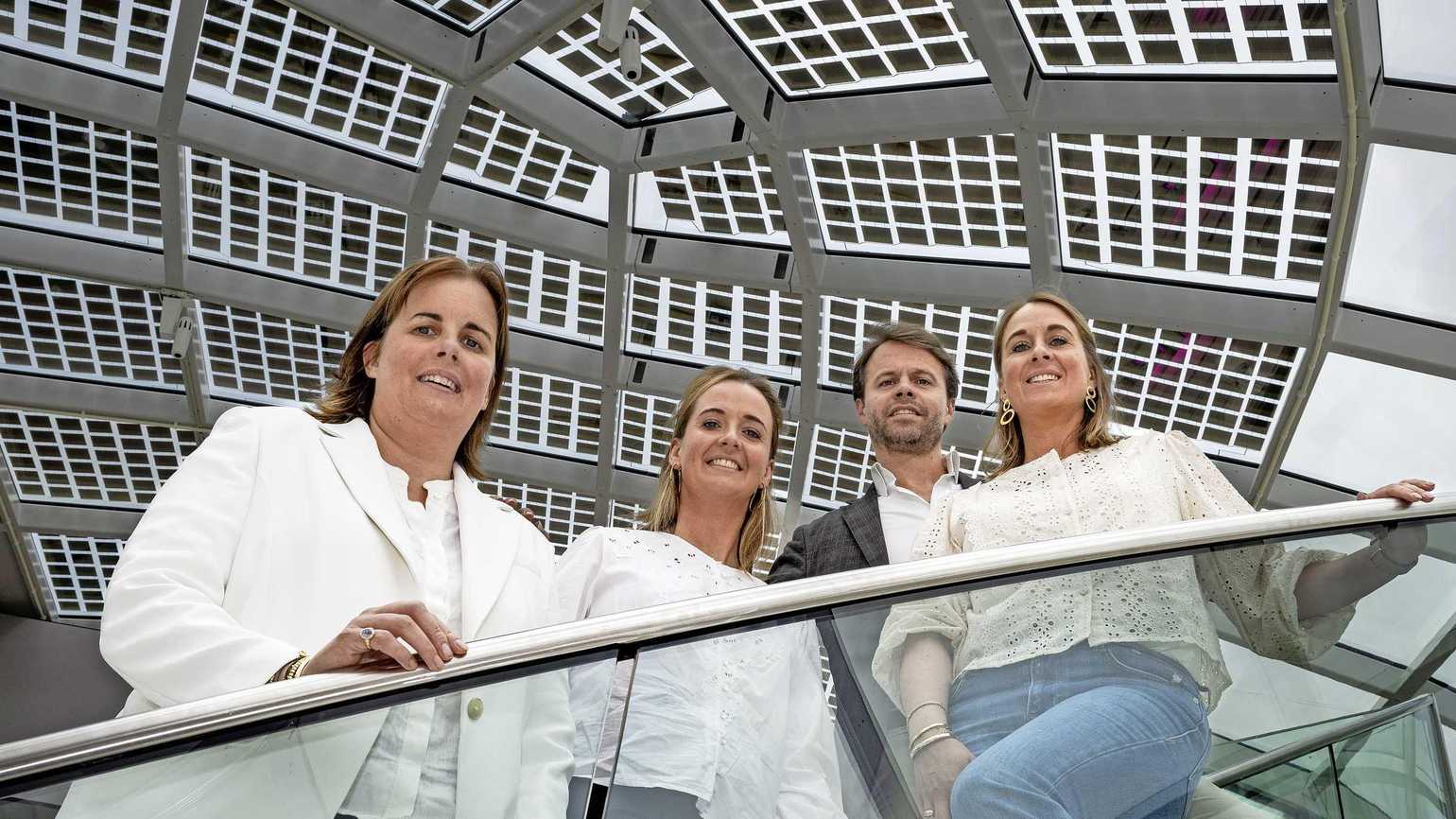Hermans Energy Solutions: Transforming Solar Energy into Everyday Structures

Suppliers of solar panels are struggling as consumers hesitate, but there is plenty of work with property developers. Especially for solar energy combined with batteries, heat pumps, and hot water tanks. “Everyone knows where the world is heading; entrepreneurs look ahead and don’t want to be left behind.”
Marceline van Heijst, her husband Rik van Ogtrop, and sisters Florentine and Kathelijne van Heijst look at the glass atrium dome the size of a football field placed above the Capital C business centre in Amsterdam. Besides being impressive, it is a significant energy source. “Solar cells are laminated between all the glass. Entrepreneurs are increasingly looking for such solutions,” says Marceline van Heijst of the family business Hermans Energy Solutions. They are also present in Hotel Jakarta in Amsterdam and the roof of Almere station.
The recent Provada real estate fair and the Green Tech fair in Amsterdam showed a renewed surge of interest from developers, architects, and horticultural businesses, noted by the daughters and son-in-law of father Dirk. “Enormously so.” Dirk van Heijst is the driving force who took over the renowned steel company Hermans Techniek in 2004 and made a name among horticulturists.
Horticulturists Onboard
After visiting a fair in Dubai, the family saw opportunities to cover greenhouse roofs with glass-laminated solar cells. “Horticulturists have to scrutinise every euro in their competition, but they have massively switched over or are in the process, partly due to Dirk’s contacts,” say the daughters, who often look beyond the borders. “We now have a large greenhouse project with solar energy in Morocco.”
One by one, the daughters and son-in-law joined the company, which now has eleven employees and a turnover of €12 million. Dirk has since sold Hermans to his daughters and son-in-law.
“Companies are still finding their way. You can’t manage anymore with just a lot of south-facing solar panels on the roof,” says Van Ogtrop. “They all generate power, but the peak is at the same time, also towards the power grid. That is often already full, so they get stuck.”

Independent
By also mounting panels on the west and east sides, both on the roof and the facade, you can gather sufficient power throughout the day, he says. “You don’t always have to cover the entire roof.”
Since the extremely high gas and electricity prices during the energy crisis, companies want to become as independent as possible for their power consumption. Marceline van Heijst: “Entrepreneurs now realise that they need to join the energy transition to reduce CO2. They are looking for solutions. I see a lot of courage, even in difficult times. Entrepreneurs don’t want to wait later due to long lead times and less availability of installers.”
Entrepreneurs approach the supplier from Bergschenhoek, near Rotterdam, sometimes with a whole wish list, says Van Ogtrop, formerly with real estate advisor Savills. “Property owners, for example, have a portfolio of twenty existing buildings that they want to make as energy-efficient as possible. But preferably also with a nice design.”
Colourful
That solar panels can be applied in various colours and shapes on facades has been known for years. “But the necessity to actually do it has never been greater,” Van Ogtrop notes from the quote requests. Especially project developers and property owners who cannot get their buildings connected to the power grid are turning to this supplier.
“We can supply the steel structures with panels in a hundred sizes. They are also in lampposts, bus shelters, on refrigerated trucks, and in noise barriers. We haven’t been surprised yet,” says Van Ogtrop. “For me, the best part is coming up with something entirely new with a company – they have plenty of ideas – and making it work well together. When an entrepreneur looks happy when it works for the first time, that’s the best moment.”
That design is appreciated is evident from the continuous demand for ‘solar trees’ like those in Oss, large steel constructions from 2010 with panels two metres in diameter. The design is protected, but building on it is allowed.

Necessity
When modernising buildings, entrepreneurs also tackle their canopies and conservatories and fill them with strips of solar cells. In car parks, roofs made of solar cells are immediately appearing with batteries and charging stations next to them. Van Ogtrop: “There is a housing shortage, and apartment complexes are being built rapidly. Since 2021, clients must meet the Nearly Energy Neutral Buildings standard with energy labels A+++ or A++++. You can’t achieve that without solar panels and battery storage.”
Belgian entrepreneurs are under pressure: from 2025, companies, schools, and care institutions must generate green electricity, and solar panels are an obvious choice.
While Dutch politics has yet to chart a clear course for energy investments, orders from Belgium and Germany are increasing. In Belgium, for example, over a quarter store their panel-generated power in a battery. “These are markets that continue to grow. We work with partners there who install the batteries and inverters themselves. We supply the solar panels, but local installers must install and connect them,” says Van Ogtrop.
“In France, it is becoming mandatory to cover car parks with solar panels. You see that more and more market is emerging as the energy transition progresses. This is just the beginning.